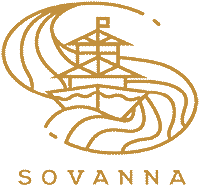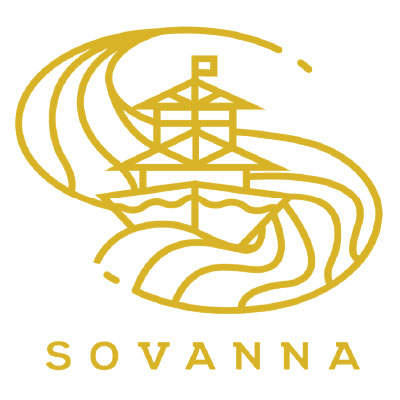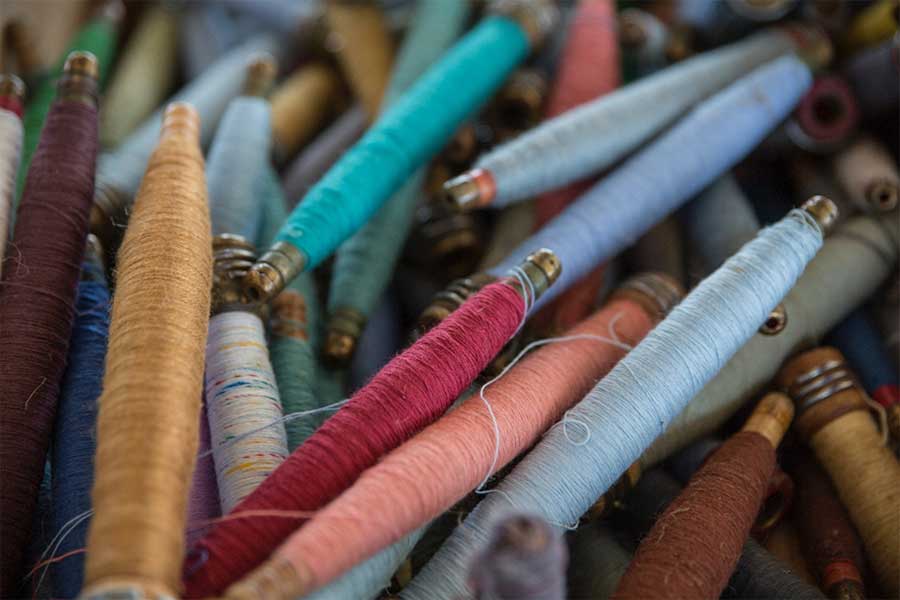“For centuries, the art of silk weaving has been part of Cambodian culture. And, an integral part of Khmer heritage. The majestic temple complex of Angkor Wat dating from the 12th century depicts bas-relief carvings of Khmer women weaving luxurious silks on its ancient walls.
History reaches out and whispers to you. Concentrate and feel the imprint of time. The clacking of the silk weaving looms interspersed with the chatter of mothers and daughters sharing skills as they weave poetry and stories into the fabric: patterns and repeat motifs are dancing through the cloth. Warp and weft threads, echo the structure of poems. Imagine the breath of jewel-toned materials brushing the skin.
In the 13th century, on a visit to Cambodia, the Chinese diplomat Zhou Daguan noted how Siamese immigrants were growing mulberry trees. And, cultivating silkworms to support the thriving silk industry. Silk weaving and textile production developed principally in traditional villages dotted along the banks of the mighty Mekong.
Girls began silk weaving as young teens and continued until their eyesight failed them. However, when the Pol Pot regime deliberately targeted artisans, the age-old art of weaving was teetering on the brink of extinction.
The Cambodian government is actively trying to restore and redevelop weaving communities. Aiming to keep this cultural gem alive. The industry is not without challenges, though. The Khmer Rouge practically eradicated the population of mulberry trees on which silkworms feed. Cambodia became dependent on Vietnam and China for raw silk. The continually rising cost of raw silk outweighs the sales price for the finished items. Workers wanting a steady wage have no choice but to trade-in their traditional skills to work in garment factories. It’s an uphill struggle.
Locals will tell you that the definition of Cambodian silk for the small percentage of exceptionally high quality, fine yarn silk is produced from the rare Cambodian Golden Cocoon Silk. The yarn of the smaller Cambodian silkworm with its lustre, strength and golden colour is native to Cambodia and also scarce.
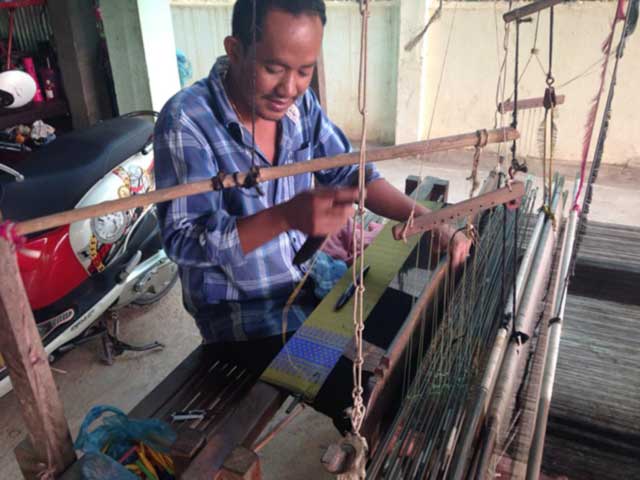
Production usually begins in the rainy season. Mulberry leaves feed the silkworms which take around one month to develop. The worms then spin their cocoon. After about three days, once they are complete, they are submerged in hot water to kill the larvae. Each cocoon is made up of two layers; The fibrous outer layer (that has a knobbly texture) and the beautiful fine inner layer. Together they produce natural golden silk. Other silk yarns which are readily available, cheaper, and used in Cambodian textiles come from the white silk cocoon imported from Vietnam, China and Thailand. They can be blended with other natural (cotton) or synthetic yarns to create a different quality cloth.
The silk is dyed to conceive any colour. The Cambodian technique of HOL is the process of resist-dyeing weft silk thread in a pre-established pattern before weaving begins. It differs from other resist-dyeing methods which dye the actual woven cloth. HOL dyes the yarns before weaving the fabric.
The threads are tied in various places with a resistant fabric to inhibit colour penetration. Then placed in clay pots of water and natural dye. Colours associated with Cambodian textiles are red, indigo, red overdyed with indigo to make purple, maroon, yellow, yellow and indigo combined to make green and blue.
Natural dyes come from plants, leaves and bark. For example, yellow is from jackfruit. Grey from ebony fruit. Orange from annatto seeds. And, red from the lac insect nest.
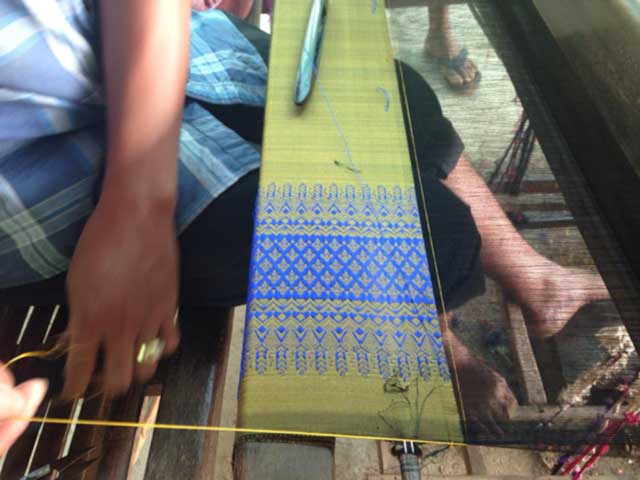
Once the dye has taken, the threads are hung in bundles to dry. The resist process is sometimes repeated in different parts of the fabric to create a new colour overlay. And, to create the colour the weaver wants, to make up their intricate artistic pattern. When the dyeing is complete, the threads are ready for the next step.
A wooden swift holds the dyed thread bundle in place as it is wound onto bobbins. The weavers concentrate hard to produce a constant twisted thread. The silk is spun into a larger yarn, and these bobbins are slotted into shuttles to weave the cloth on wooden looms. The looms are usually three metres long and one-metre broad. The threads are stretched out and accurately adjusted after each shuttle pass to keep the clarity of the pattern. And a beautiful piece of cloth is born.
You can witness the full silk weaving process at Koh Dach. Known locally as Silk Island it is part of your cruise experience onboard Sovanna. As the temperatures rise, and crickets crackle, hop aboard Sovanna. Relax and let us take you to this idyllic little spot.
You can buy handmade silks there from the local artisans. Just remember if you’re looking for a souvenir and ask for REAL 100% Cambodian silk, you are asking for top quality which is more expensive than the cotton-silk blends. But, every purchase, no matter the size, helps keep the tradition of Cambodian silk weaving alive.
Follow us on Facebook | See more on YouTube
Read our blog post “Cruising on the Tonle Sap River in Cambodia“
